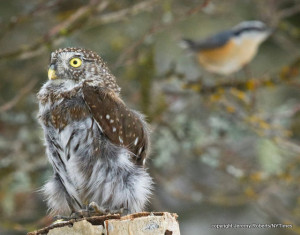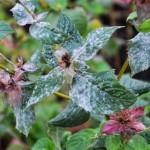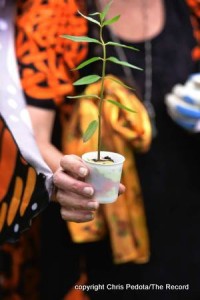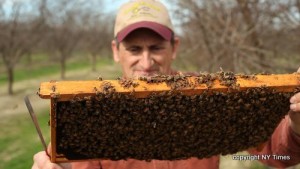 “Both honeybees and monarchs have been in steep decline over the last decade or more, with the monarch population dropping as much as 90 percent. Only last week, an annual survey concluded that beekeepers lost more than 42 percent of their colonies in the 12 months that ended in April.” Read more from the New York Times here.
“Both honeybees and monarchs have been in steep decline over the last decade or more, with the monarch population dropping as much as 90 percent. Only last week, an annual survey concluded that beekeepers lost more than 42 percent of their colonies in the 12 months that ended in April.” Read more from the New York Times here.
Monthly Archives: May 2015
Living Concrete Incorporates Helpful Bacteria
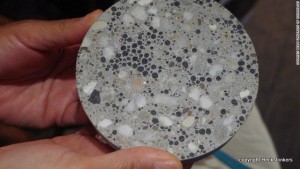 “We have invented bioconcrete — that’s concrete that heals itself using bacteria,” says Henk Jonkers of Delft University of Technology in the Netherlands.
“We have invented bioconcrete — that’s concrete that heals itself using bacteria,” says Henk Jonkers of Delft University of Technology in the Netherlands.
We use a lot of concrete in our modern world. Concrete often cracks. “If you have cracks, water comes through – in your basements, in a parking garage. Secondly, if this water gets to the steel reinforcements…if they corrode, the structure collapses.”
“The bioconcrete is mixed just like regular concrete, but with an extra ingredient — the ‘healing agent’. It remains intact during mixing, only…becoming active if…water gets in.”
Now Jonkers hopes his concrete could be the start of a new age of biological buildings.
“It is combining nature with construction materials,” he says. “Nature is supplying us a lot of functionality for free — in this case, limestone-producing bacteria. If we can implement it in materials, we can really benefit from it, so I think it’s a really nice example of tying nature and the built environments together in one new concept.”
Read the article from CNN here.
The Bird Watcher: Jim Wright Speaks
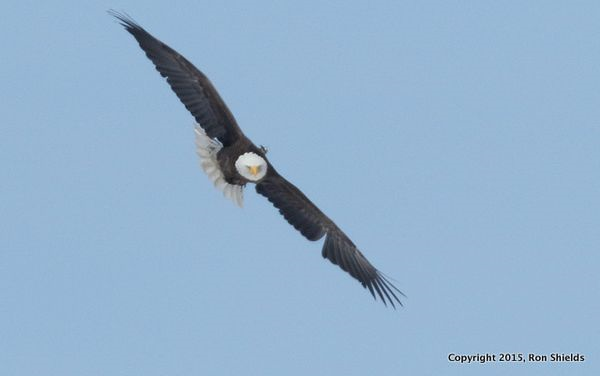 This blog’s founder, Jim Wright, has a great article about Alice the Ridgefield Park eagle in The Record today. Read it here.
This blog’s founder, Jim Wright, has a great article about Alice the Ridgefield Park eagle in The Record today. Read it here.
When Birds Squawk, Other Species Seem to Listen
“Studies in recent years…have shown that animals such as birds, mammals and even fish recognize the alarm signals of other species. Some can even eavesdrop on one another across classes. Red-breasted nuthatches listen to chickadees. Dozens of birds listen to tufted titmice, who act like the forest’s crossing guards. Squirrels and chipmunks eavesdrop on birds, sometimes adding their own thoughts.”
Read from the New York Times about experiments by Erick Greene, a professor of biology at the University of Montana, here.
The White House Acts to Protect Pollinators
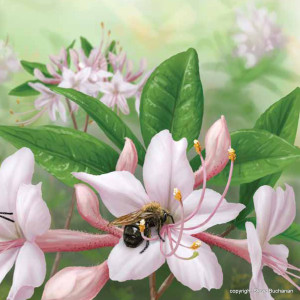 Just yesterday, the Obama administration announced the first National Strategy to Promote the Health of Honey Bees and Other Pollinators.
Just yesterday, the Obama administration announced the first National Strategy to Promote the Health of Honey Bees and Other Pollinators.
“The goal is to protect honey bees and other pollinators and their habitats. Bees — along with birds, bats and butterflies — play a key function by pollinating commercial fruit and vegetable crops; alfalfa and clover that provide feed for cattle; and the nuts, seeds and fruits that sustain massive grizzly bears and delicate songbirds. Some estimates put the economic value of their activities at roughly $15 billion a year.
Drastic decline of honey bees in recent years spurred the initiative. The plan will manage the way forests burned by wildfire are replanted, the way offices are landscaped and the way roadside habitats where bees feed are preserved.”
“I have to say that it is mighty darn lovely having the White House acknowledge the indigenous, unpaid and invisible workforce that somehow has managed to sustain all terrestrial life without health-care subsidies, or a single COLA, for that past 250 million years,” said Sam Droege, one of the country’s foremost experts on native bees.
Read Juliet Eilperin’s article in the Washington Post here.
Using Milk to Prevent Powdery Mildew
- Monarda
- Zinnia
- Squash
It’s early in the gardening season and most plants are looking fresh and green. But the humidity in the air foreshadows what may come later in the summer. Powdery mildew is a fast-growing fungus that creates whitish patches on the leaves of many common plants. It regularly disfigures the monarda and zinnias in my garden. Pumpkins, winter squash, and other members of the cucumber family are also prone to this disease.
I find it much easier to tolerate a bit of mildew than to spray toxins, so I generally manage it by keeping the air circulating, avoiding overhead watering (especially in the evening) and looking the other way. But this treatment seems like something I might be willing to try.
Read about from someone with first hand experience here.
Could Blue Lights Help Prevent Bird Strikes?
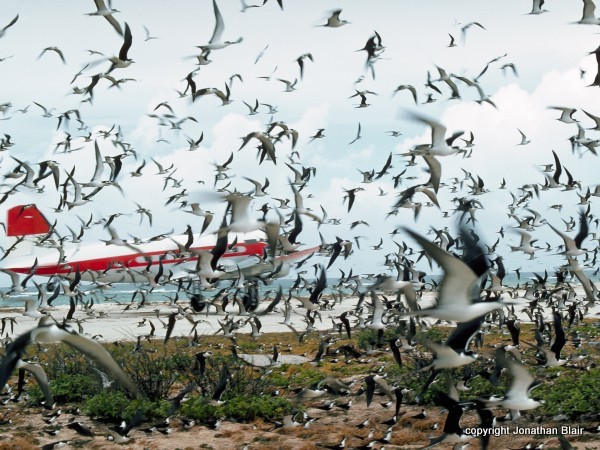 “Bird strikes destroy planes, kill people and birds, and cause an estimated $700 million in damage each year in the US alone.”
“Bird strikes destroy planes, kill people and birds, and cause an estimated $700 million in damage each year in the US alone.”
Early studies suggest that using what we know about avian sight – birds see a wider color space and have a higher sensitivity to ultraviolet light than we do – may help them avoid collisions.
“Researchers have found that blue LED lights (with a wavelength of 470 nm) are the most conspicuous to brown-headed cowbirds, which often collide with aircraft.” Preliminary proposals for changes at airports are included in the study.
Read more by Ian Randall on ScienceShot here.
Volunteers Plant Milkweed for Butterflies
“Within half an hour, fifty gardening volunteers — kneeling on the ground, digging away and swatting flies — had planted 500 milkweed plants.”
“The milkweeds planted [last] Saturday in a meadow at the New Jersey Botanical Garden [in Ringwood] were meant to host monarch butterflies that migrate thousands of miles each year. They lay eggs only on milkweeds, meaning that, as a sign at the event said, No milkweed, No monarchs.”
The plants were purchased through a collaborative funding grant from the National Audubon Society and Bergen County Audubon Society.
Read more by Minjae Park on northjersey.com here
Remembering Mount St. Helens
I remember it. I was safely ensconced on the east coast, but I had a friend in Portland who had to wear a dust mask for a week and sweep inches of ash from her driveway. It was fascinating and terrifying to follow the story on the news.
I visited the mountain a few years ago – the visitor’s center tells the amazing story in detail. And the drive through the recovering landscape is unforgettable.
See some more stunning photos here.
Third Tuesday Nature Walk Tomorrow at DeKorte
 FREE two-hour guided nature walk in DeKorte Park, Lyndhurst.
FREE two-hour guided nature walk in DeKorte Park, Lyndhurst.
We’ll walk the park to see what’s blooming and who’s visiting. Meet at 10 outside the Environment Center.
Sponsored by NJMC and the Bergen County Audubon Society.
To register, contact Don Torino of the BCAS at call or 201-230-4983.

